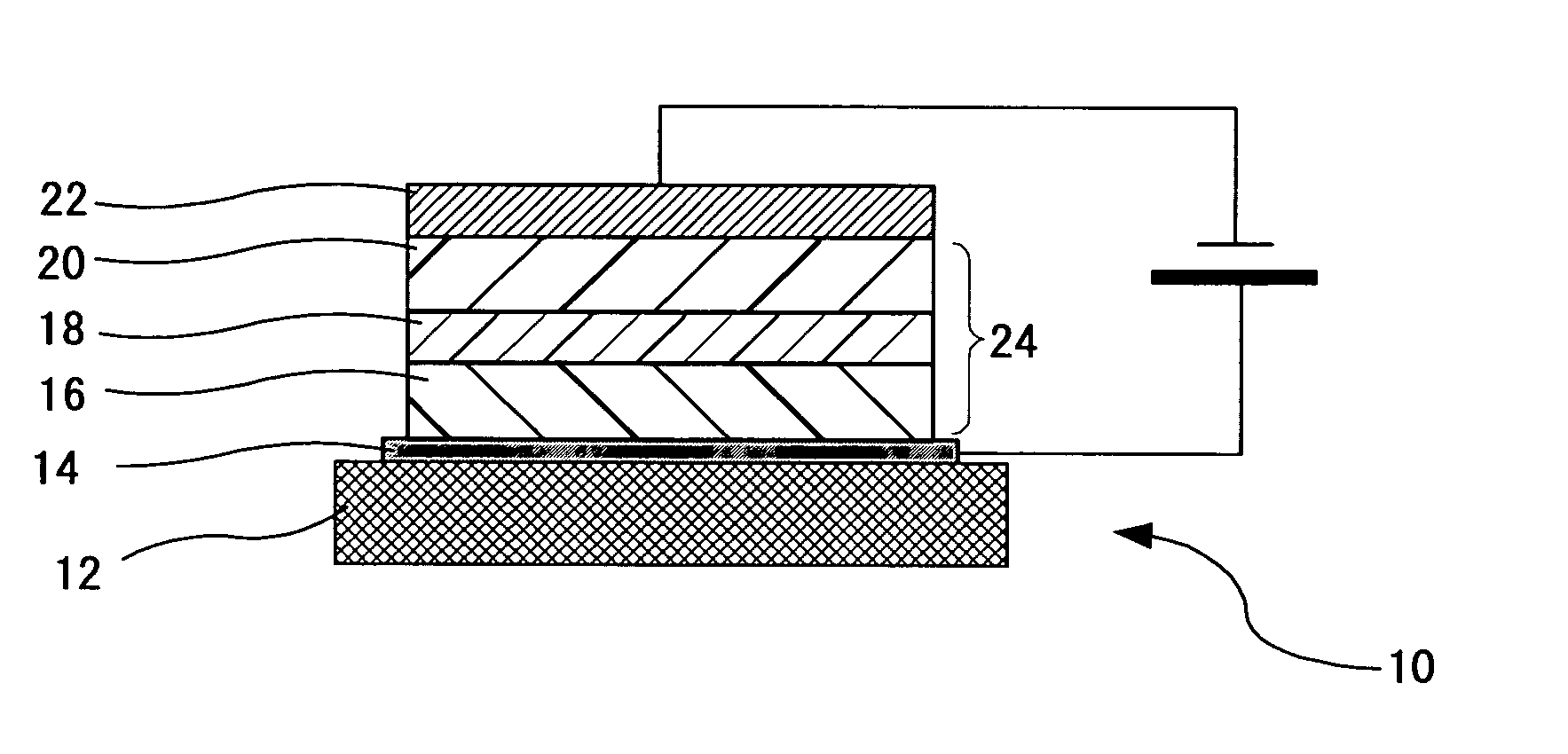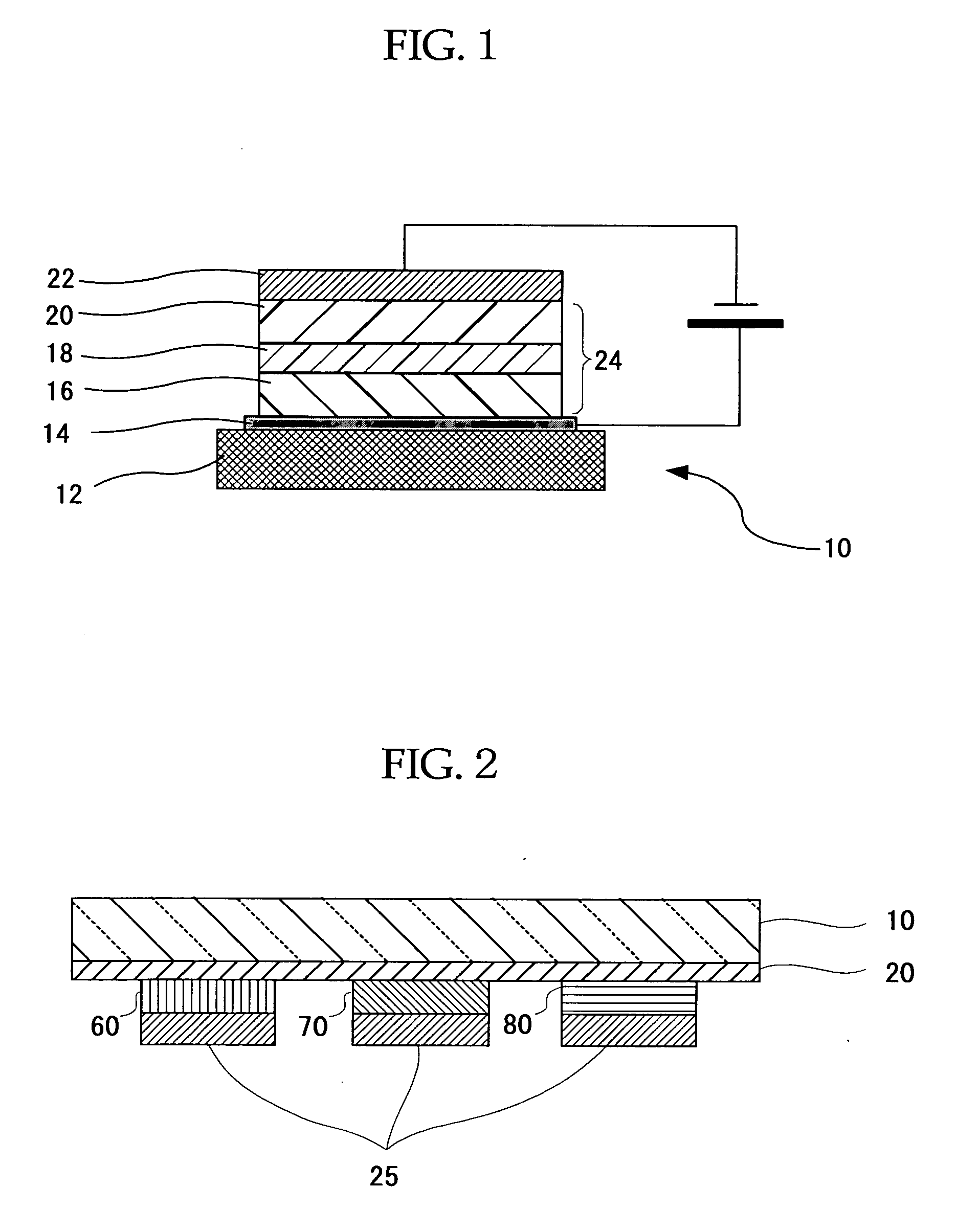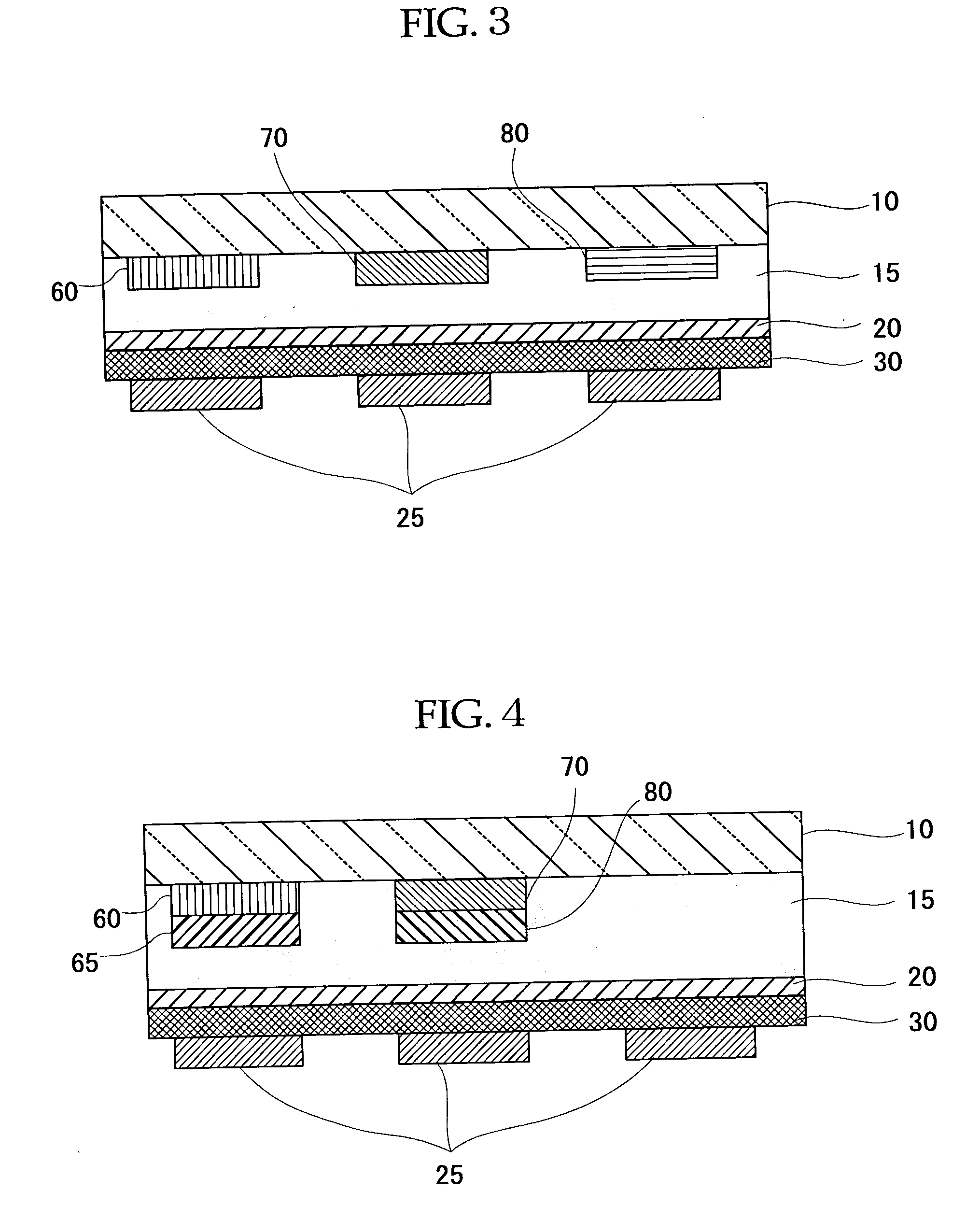Organometallic Complex, Luminescent Solid, Organic el Element and Organic el Display
a technology complexes, applied in organic chemistry, group 5/15 element organic compounds, natural mineral layered products, etc., can solve the problems of insufficient emitting efficiency of metal complexes, poor margin of nominating materials of phosphorescent materials, and shortening the operating life of organic el elements with metal complexes. , to achieve the effect of superior durability, long operating life and high efficiency
- Summary
- Abstract
- Description
- Claims
- Application Information
AI Technical Summary
Benefits of technology
Problems solved by technology
Method used
Image
Examples
synthesis example 1
Synthesis of Pt(3,5-di(2-pyridyl)toluene)biphenyloxide
[0172] Pt(3,5-di(2-pyridyl)toluene)(biphenyloxide) (hereinafter referred to as “Pt(dpt)(obp)”) was synthesized as follows. Specifically, 3,5-dibromotoluene (5.0 g; 20 mmol), 2-tri-n-butylstannylpyridine (26.9 g, 73 mmol), bis(triphenylphosphine)palladium dichloride (1.55 g, 2.2 mmol), and lithium chloride (11.7 g, 276 mmol) were added to 130 ml of toluene, and the mixture was refluxed for two days. After allowing the mixture to cool, 50 ml of saturated KF aqueous solution was added. The deposited solid was collected by filtering, the solid was washed using a small amount of cooled toluene (200 ml by 3 times) then dried under vacuum. The resulting solid was rinsed sufficiently in a mixture solution of dichloromethane and NaHCO3. The organic layer of the liquid was separated, which was dried over MgSO4 powder, then solvents were removed from the solid using an evaporator. The solid was recrystallized using dichloromethane to obtai...
synthesis example 2
Synthesis of Pt(3,5-di(2-pyridyl)toluene)(OH) (hereinafter referred to as “Pt(dpt)(OH)”)
[0176] Pt(dpt)Cl was prepared in the same manner as Synthesis Example 1, then the resulting Pt(dpt)Cl (100 mg, 0.21 mmol) was added to acetone (30 ml) and stirred, to which KOH powder (56 mg, 1 mmol) was added to stir at room temperature for 10 minutes. Addition of a few drops of pure water initiated deposition of a yellow solid. The reactant was stirred for three hours while heating and allowed to cool then the deposited solid was separated by filtration, washed sufficiently using pure water, methanol and diethylether in order, and dried under vacuum to obtain a yellow solid of Pt(dpt)(OH). The yield was 68%. FIG. 10 shows the IR spectrum of the Pt(dpt)(OH).
synthesis example 3
Synthesis of Pt(3,5-di(2-pyridyl)toluene)(1,2,4-triazolate) (hereinafter referred to as “Pt(dpt)(taz)”)
[0177] Pt(dpt)Cl was prepared in the same manner as Synthesis Example 1, then the resulting Pt(dpt)Cl (100 mg, 0.21 mmol) was added to acetone (30 ml) and stirred, to which 1,2,4-triazole sodium salt (29 mg, 0.32 mmol) was added to stir at room temperature for 10 minutes. Addition of a few drops of pure water initiated deposition of a yellow solid. The reactant was stirred for three hours while heating and allowed to cool then the deposited solid was separated by filtration, washed sufficiently using pure water, methanol and diethylether in order, and dried under vacuum to obtain a yellow solid of Pt(dpt)(taz). The yield was 82%. FIG. 11 shows the IR spectrum of the Pt(dpt)(taz).
PUM
| Property | Measurement | Unit |
|---|---|---|
| voltage | aaaaa | aaaaa |
| internal quantum efficiency | aaaaa | aaaaa |
| internal quantum efficiency | aaaaa | aaaaa |
Abstract
Description
Claims
Application Information
 Login to View More
Login to View More - R&D
- Intellectual Property
- Life Sciences
- Materials
- Tech Scout
- Unparalleled Data Quality
- Higher Quality Content
- 60% Fewer Hallucinations
Browse by: Latest US Patents, China's latest patents, Technical Efficacy Thesaurus, Application Domain, Technology Topic, Popular Technical Reports.
© 2025 PatSnap. All rights reserved.Legal|Privacy policy|Modern Slavery Act Transparency Statement|Sitemap|About US| Contact US: help@patsnap.com



